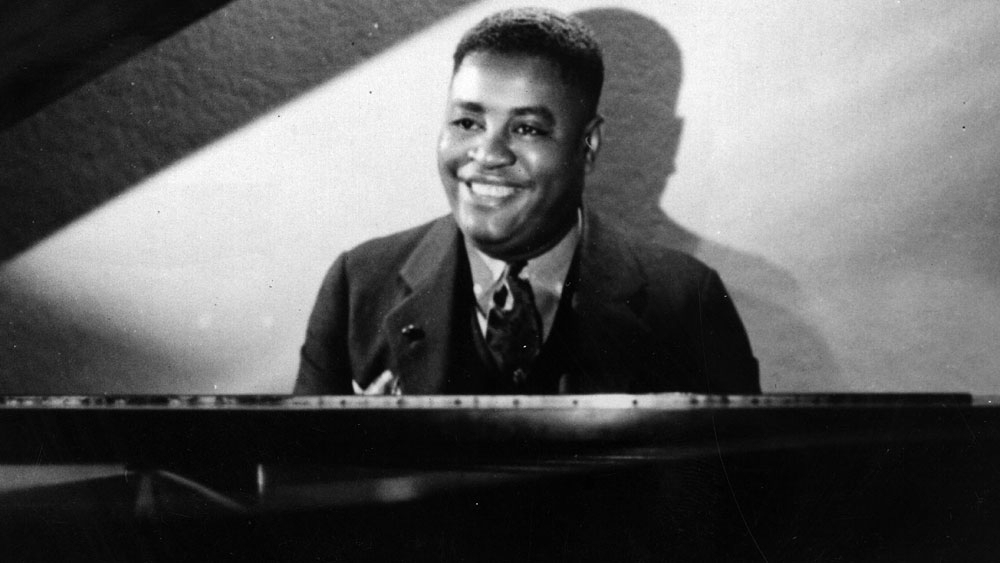Art Tatum – A Complete Biography
Introduction
Art Tatum (1909–1956) is widely regarded as one of the most astonishing pianists in jazz history—an improviser whose technique, harmonic imagination, and rhythmic command reset the instrument’s possibilities. Although he played deeply from the blues and often accompanied blues and swing stars, Tatum himself was first and foremost a jazz pianist, not a traditional blues musician. His influence touches virtually every modern jazz pianist who followed.

Childhood
Arthur Tatum Jr. was born on October 13, 1909, in Toledo, Ohio, to Arthur Tatum Sr., a mechanic, and Mildred Hoskins. From infancy he had severely impaired vision—blind in one eye and with limited sight in the other—conditions likely stemming from early illness and only partially improved by childhood surgeries. He began the piano young, learning largely by ear from radio broadcasts, phonograph records, and piano rolls, aided by a remarkable memory and an ear so acute that colleagues often described it as perfect pitch. He attended the Jefferson School in Toledo and later the School for the Blind in Columbus, Ohio, before continuing studies back home.
Youth
As a teenager, Tatum was already a working professional in Toledo clubs, and by 1927–29 he had a daily program on local station WSPD that was picked up nationally by the Blue Network. In 1932 he moved to New York as accompanist to singer Adelaide Hall; the following year he made his first solo recordings—“St. Louis Blues,” “Sophisticated Lady,” “Tea for Two,” and “Tiger Rag.” Those 1933 sides, particularly the blistering “Tea for Two,” announced a fully formed virtuoso with stride foundations (James P. Johnson, Fats Waller) and a modern harmonic palette that stunned peers and audiences alike.
Adulthood
Through the mid- and late-1930s Tatum worked major rooms in New York, Chicago, and Los Angeles, toured England in 1938, and became a perennial musician’s musician—lionized even as popular polls often lagged behind his reputation. In 1943 he formed his most famous trio with guitarist Tiny Grimes and bassist Slam Stewart, a high-wire unit celebrated for its telepathy and speed. In the 1950s, producer Norman Granz recorded Tatum extensively for Clef/Verve, yielding the monumental Solo Masterpieces and Group Masterpieces series; late sessions included the revered meeting with tenor saxophonist Ben Webster (1956). These recordings document Tatum’s signature traits: a stride-rooted but elastic left hand, torrents of crystal-clean runs, and audacious reharmonization (substitute chords, passing harmonies, and bitonality) that expanded jazz piano’s vocabulary.
Major compositions
Tatum was celebrated less for original tunes than for his transformative arrangements of standards and blues. Among the few pieces bearing his name, “Tatum-Pole Boogie” stands out as a dazzling original that fuses boogie-woogie drive with his trademark right-hand filigree. He also co-composed the small-group vehicle “Verve Blues” with Lionel Hampton and Harry “Sweets” Edison during the famed mid-’50s sessions. But Tatum’s “compositional” legacy lives most powerfully in the way he re-imagined existing songs—“Tea for Two,” “Tiger Rag,” “Willow Weep for Me,” “Sweet Lorraine,” and “Aunt Hagar’s Blues”—through radical voicings, substitute progressions, and orchestral textures at the keyboard.
Death
A heavy drinker later in life and long affected by diabetes, Tatum’s health declined in the mid-1950s. He died in Los Angeles on November 5, 1956, of uremia (kidney failure) at age 47. His passing came just weeks after some of his last studio dates, capping a career that, though relatively short, left an unusually rich recorded legacy and an influence that remains foundational to jazz piano.
Conclusion
Art Tatum changed what pianists believed possible. Even musicians who traveled very different stylistic paths—Oscar Peterson, Bud Powell, and countless others—absorbed his lessons in touch, time, and harmony. Whether in after-hours fireworks or studio takes captured by Norman Granz, Tatum’s playing retains its shock of brilliance: the blues feeling, the stride heartbeat, and a harmonic imagination that still sounds ahead of its time.

Comments are closed